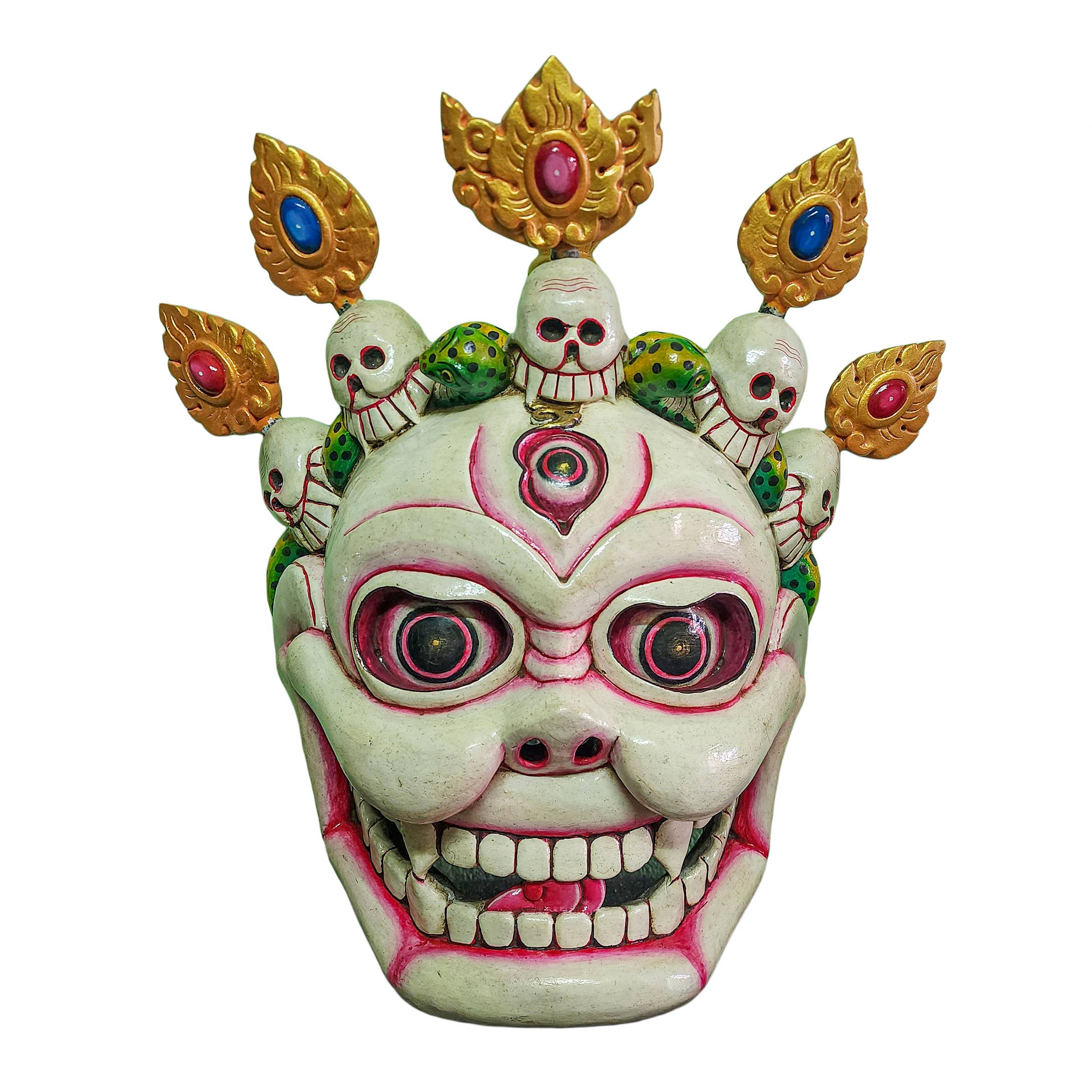Selling on ETSY discount
This discount is offered to ensure our prices remain highly competitive across all platforms, including Etsy. We aim to provide the best value for our customers, so we adjust our pricing to stay in line with market trends. By doing so, we continue to uphold our commitment to being the leading provider of high-quality Nepali handicrafts at the best prices.
Discount is scheduled to end on 2024-12-26 Which is 34 Days from now
Citipati
In Tibetan Buddhism, the Citipati, or "Lords of the Cemetery" are two mythological Buddhist ascetics, who were so deep in their meditation, they were caught unawares by a thief and beheaded even before they knew they were dead. As a symbol, the Citipati represents the eternal dance of death and perfect awareness. They are usually depicted as a male/female pair of intertwined skeletons caught up in an ecstatic dance. The dance of the Citipati is commemorated twice annually in Tibet with ritual dances. The Citipati are invoked as 'wrathful deities, benevolent protectors who appear as fierce beings with a demonic appearance.
Read More
Iconography
The Citipati are two skeletons, one of a man and the other of a woman, represented with arms and legs interlaced, dancing the Tsam dance. They are considered to be masters of the cemetery. The Citipati are one of the seventy-five forms of Mahakala and are visible reminders of the impermanence of everything worldly. Their mouths are parted in a large grin, showing all their teeth. Each wears a long scarf. According to a Northern Buddhist legend, the Citipati were, in a former existence, two ascetics who were once lost in such deep meditation that they did not notice that a thief had cut off their heads and thrown them in the dust. Since that time they have been ferocious enemies of thieves, having vowed eternal vengeance. This legend is somewhat similar to that of Yama. In the cemetery, the Citipati are supposed to perform a skeleton ritual dance during which they blow the Tibetan long horns. In most monasteries the dance, symbolic of the cycle of life and death, is performed in the monastery cemetery once in summer and once in winter by monks wearing masks.
About Wooden Mask
this Citipati mask is Nepali handmade mask and we are Introducing our exquisite collection of Nepali handmade hand-carved wooden Buddhist masks and wall hangings, meticulously crafted by skilled artisans. Each piece in this collection reflects the rich cultural heritage and spiritual significance of Nepal. These masks and wall hangings are not just decorative pieces but hold deep symbolic meaning, making them perfect for adding an authentic touch to your living spaces or meditation rooms.
Made from high-quality, ethically sourced wood, these masks and wall hangings are the epitome of craftsmanship. Each intricate detail is delicately carved by hand, showcasing the artistry and dedication of the artisans. Whether you're a collector, a spiritual seeker, or simply appreciate the beauty of traditional craftsmanship, these wooden Buddhist masks and wall hangings will captivate your senses and bring a sense of tranquility to your surroundings. Hang them on your walls or display them as a centerpiece, and let their timeless beauty and spiritual aura create a serene atmosphere in your home or office. Discover the magic of Nepali artistry with our hand-carved wooden Buddhist masks and wall hangings today.
Read More
About Color Finishing
The Citipati is adorned with traditional colors, creating a captivating aesthetic through a combination of gold and various hues. This painting technique follows a time-honored process that aims to faithfully represent the Citipati in accordance with traditional color descriptions. In the context of Buddhist statues, this approach holds great significance. Each statue has its own primary color, and it is crucial to depict the statue in its authentic shade.
This adherence to color accuracy is akin to the meticulous artistry seen in thangka paintings. To achieve this finishing, organic colors and genuine gold are used, while the expertise of a skilled thangka artist is sought, as painting on a metal surface requires a distinct set of skills to bring out the elegance and beauty of the statue.
By employing this traditional coloring method, the Citipati is not only aesthetically pleasing but also maintains its cultural authenticity, paying homage to the rich traditions and practices associated with Buddhist art.
Read More
Brief Introduction
This wooden mask is made from the finest poplar wood, embodying both natural beauty and artistic craftsmanship. The light, creamy tones of the poplar wood lend an air of elegance to this unique mask. Its intricate details and smooth texture showcases the exceptional workability of poplar wood, allowing for precise carving and shaping. With its durability and timeless appeal, this poplar wood mask is a stunning addition to any space, adding a touch of cultural richness and artistic charm to your decor.
